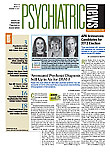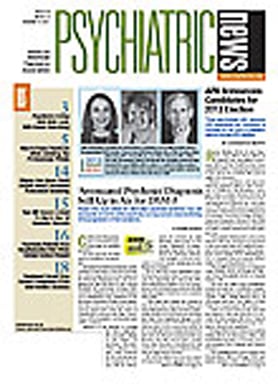The collective results of three clinical trials add more evidence to the value of the Columbia-Suicide Severity Rating Scale (C-SSRS) as a tool for describing and predicting the risk of suicide attempts, according to a report appearing online November 8 and in the December issue of the American Journal of Psychiatry.
Findings suggest that clinical thresholds may be useful for identifying individuals likely to attempt suicide or for following patients in the clinic or in clinical trials, wrote clinical psychologist Kelly Posner, Ph.D., and colleagues. Posner is an associate professor in the Department of Psychiatry at the College of Physicians and Surgeons at Columbia University and the director of the Center for Suicide Risk Assessment there.
The three studies, said the researchers, "provide initial promising data on the convergent and divergent validity, predictive validity, sensitivity, specificity, sensitivity to change, and internal consistency of the C-SSRS."
The instrument has already been adopted by numerous health agencies, hospitals, and other organizations that must address suicidality in the populations they serve, said Posner in an interview.
"This is a significant addition to the literature," said Paula Clayton, M.D., medical director of the American Foundation for Suicide Prevention (AFSP), in an interview. The foundation sponsored one of the three studies included in the AJP article.
"One of its strengths is the specific definitions of suicidal thinking, planning, and attempts," said Clayton. "Another is its inclusion of aborted or interrupted attempts. People can make serious attempts at suicide without consequences, and we need to record [these attempts]."
Creating more objective tools for gauging suicide risk was given a significant push by the controversy over the Food and Drug Administration's black-box warning in 2005 on antidepressant use for children and adolescents.
Two problems had to be addressed. One was the predictive validity of any assessment. Could it discriminate between those who were truly likely to try to take their own lives and those for whom suicidal behavior or ideation would have some nonlethal outcome?
For example, any mention of suicide typically triggers a cascade of events in a hospital, often for people who are unlikely to attempt suicide, said Posner. More accurate predictions of risk would cut down on false positives and lower this unnecessary burden.
The second problem was the need for a precise, meaningful common language agreed upon by researchers and clinicians.
The Institute of Medicine noted in 2002 that suicide research is hampered by lack of uniform definitions and inaccurate reporting of events.
"Prevention depends on appropriate identification of phenomena," Posner told Psychiatric News. "If you can't identify something, it limits our ability to understand, manage, and treat illness. That limits our confidence in drug trials and epidemiological studies."
The scale incorporates "research-supported definitions" now used by the Centers for Disease Control and Prevention and other bodies.
The C-SSRS measures four domains of suicidal ideation and behavior: severity of ideation, intensity of ideation, behavior, and lethality.
The three multisite studies reported on in the current paper looked at different populations. The first was the National Institute of Mental Health's Treatment of Adolescent Suicide Attempters of 124 patients with a suicide attempt or interrupted attempt in the prior 90 days.
The second was an industry-sponsored trial of escitalopram that excluded patients considered "suicide risks," a common practice in many drug trials.
The third study (sponsored by AFSP) looked at recent suicide attempts and nonsuicidal self-injury conducted in emergency departments, comparing the C-SSRS with other measures, including the Scale for Suicide Ideation, Beck's Lethality Scale, and the Columbia Suicide History Form.
In these studies, as hypothesized, the C-SSRS ideation and behavior subscales agreed with established ideation and behavior scales, but diverged with items on the Beck Depression Inventory and the Montgomery-Asberg Depression Rating Scale that were not expected to overlap with suicidal ideation and behavior, wrote Posner and colleagues.
"This is a good beginning step in the right direction," said Clayton. "The next step is to apply the same scale to ordinary adolescents without excluding prior attempters."
"The Columbia–Suicide Severity Rating Scale: Initial Validity and Internal Consistency Findings From Three Multisite Studies With Adolescents and Adults" is posted at ajp.psychiatryonline.org/article.aspx?doi=10.1176/appi.ajp.2011.10111704>. The C-SSRS Web site is <www.cssrs.columbia.edu>. 

